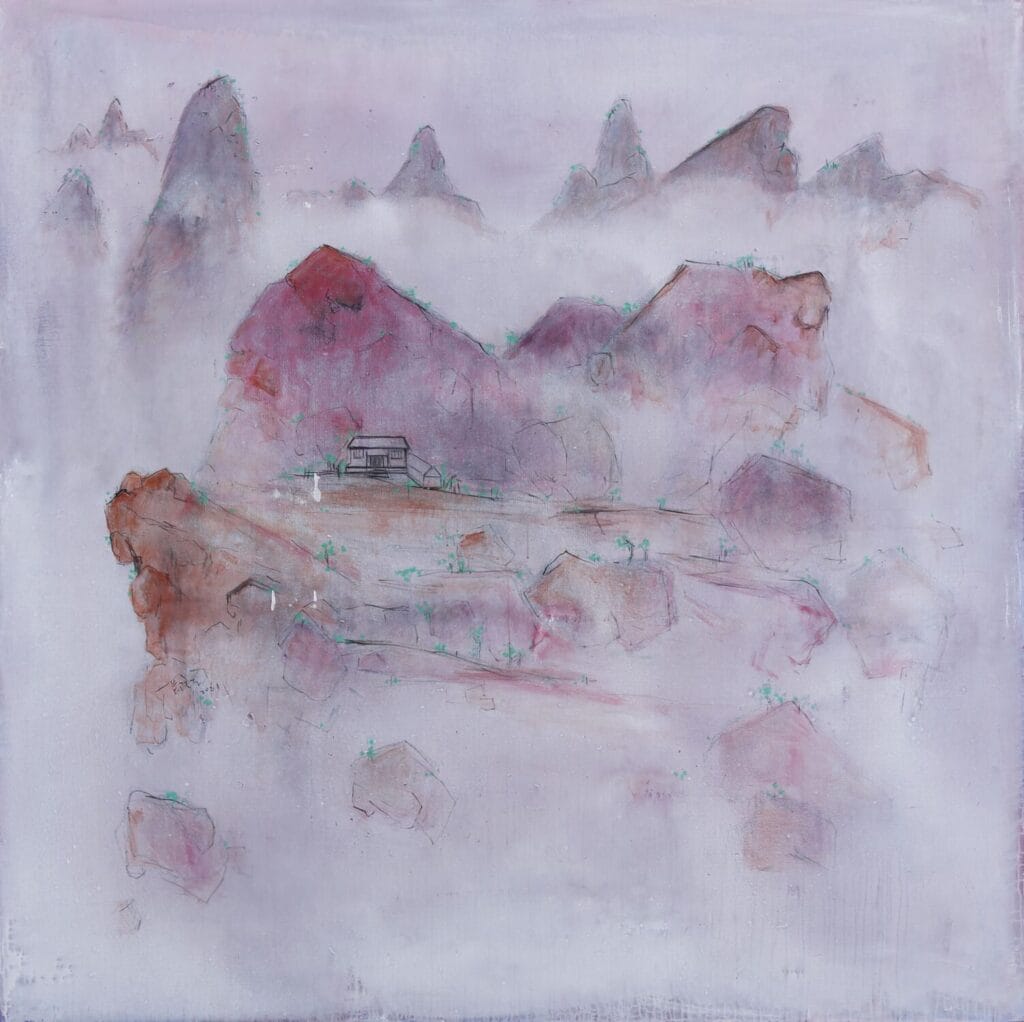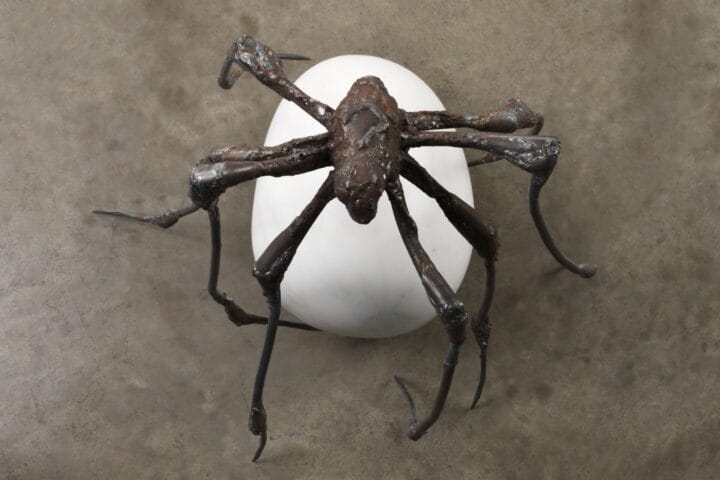Hanart TZ Gallery is pleased to present the duo exhibition of Cheng Tsai-Tung and Chen Heng, opening on 17 December 2022. The exhibition features new paintings from the last few years, displayed against selected examples of earlier works.

In recent years, Cheng Tsai-Tung has increasingly shifted to a state of solitude in which his interlocutors remain the ancients alone. Through classical poetry, he has slowly found ways to crystallize these complex sentiments into a faint melancholy. He condenses his personal tales and sensibility into the mise-en-scène of colourful moonlight, and at the same time morphs himself into a sentient being within the stream of history.
Cheng Tsai-Tung’s contemplative anxiety about the passing of time, and the fragility and preciousness of life drive him on the path of creation. His pursuit of archaic style is a testament to his many years of research travels around China. Although Cheng Tsai-Tung refuses the traditional paths of ink painting, his persistent search for the archaic spirit has opened a personal approach. In these paintings, we can see his engaged interest in ink and brush, his relish in the charm of awkwardness and playfulness, as well as the inner reserve of his personality that flashes out of the silence.

Chen Heng emphasizes “realization” and “transcendence” in his art. In four decades of artistic journey, he has continuously sought to sublimate his representational skills and to refine images to seek the cultural meaning of imagery. He deconstructs the ingredients of oil painting to seek aesthetics that suit a Chinese context. This includes his interpretation of the ‘negative’ space of ink painting (the ‘blank’ liubai) as an extra-visual context and highlighting visual scenes as mental ‘events’ and ‘things’.
Chen Heng’s latest series is titled The Unity of Man and Nature. The artist heeds the Doctrine of the Mean, which says: “What is meant by ‘The Mean’ is the state in which joy, anger, sorrow, and pleasure have not yet arisen “. Chen Heng depicts the female as a symbol of this state of “not-arisen”, where emotions are formed but not expressed. The ancient doctrine describes this as the closest state to the nature of things. Chen Heng depicts female figures in a state of non-movement and non-stillness. Their gestures cannot be defined in terms of sensuality; rather, their strong maternal nature connects more to the Earth and finds an echo in the motifs of Renaissance paintings. The gentle character of the painter is thus embodied in his restrained style. Chen Heng prompts connoisseurs to look for hints of Chinese ‘mountain-water’ art in his figure paintings; his subdued tone and aspect ratio are inspired by the landscape art of the Song Dynasty. For aesthetic principles, Chen Heng submits to the ritual bronze vessels of the Zhou dynasty. They epitomize for him the gravitas and correctness of the classical age.
Hanart TZ Gallery
Hong Kong, 葵興 Kung Yip St, 17-21號, Mai On Industrial Building, 2/F










